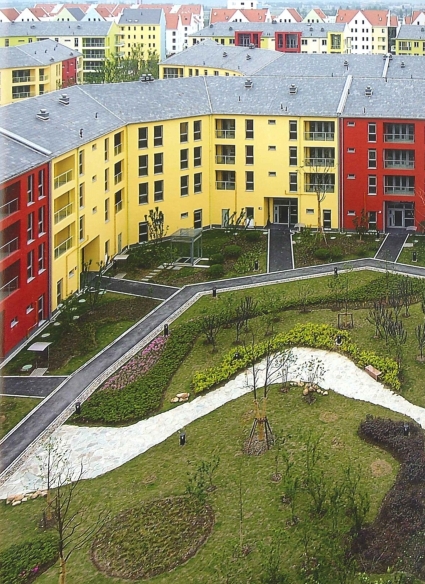
Perimeter block with
semi-public neighbourhood
park
source: Frank P. Palmer; Den
Hartog, Harry: Shanghai
New Towns - Searching for
community and identity in
a sprawling metropolis.
010 Publishers, Rotterdam
2010, 416 p. ISBN
978-90-6450-735-9
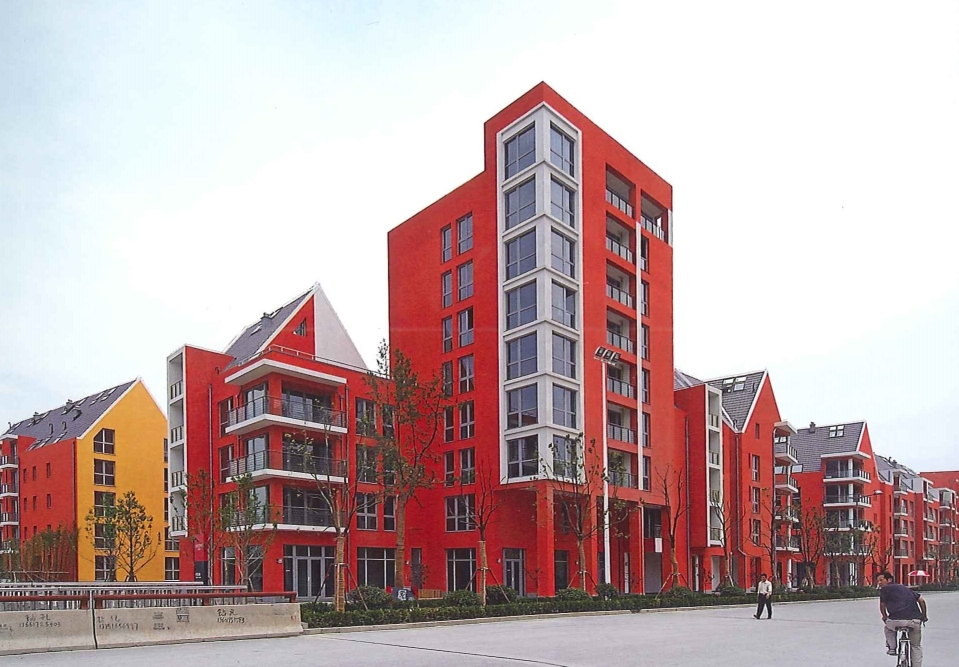
AS&P opted to reinterpret
the international Bauhaus
style
source: Frank P. Palmer; Den
Hartog, Harry: Shanghai
New Towns - Searching for
community and identity in
a sprawling metropolis.
010 Publishers, Rotterdam
2010, 416 p. ISBN
978-90-6450-735-9
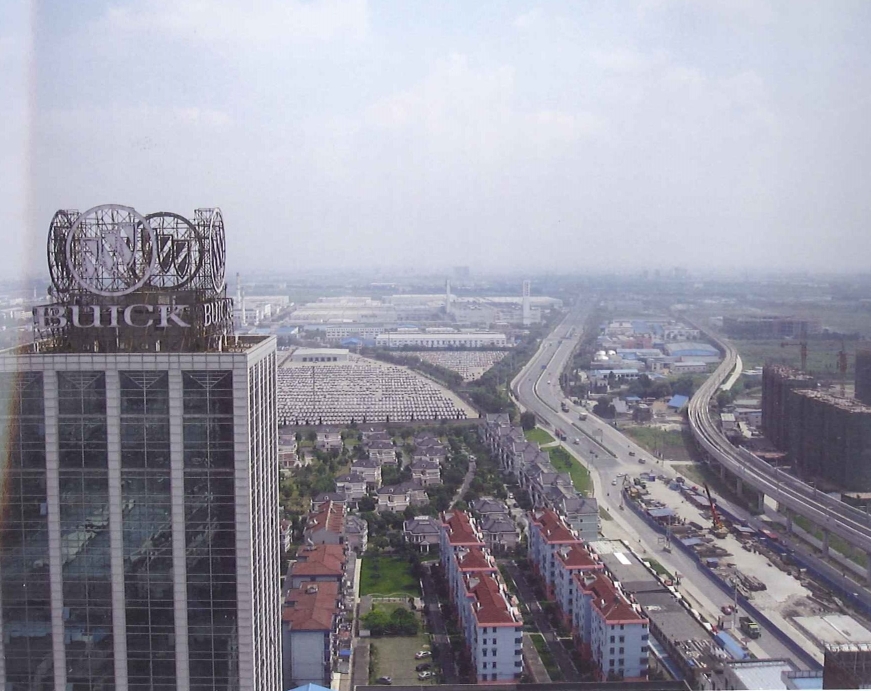
Shanghai International
Automobile City with new
highway and metro
source: AS&P; Den Hartog, Harry:
Shanghai New Towns -
Searching for community
and identity in a
sprawling metropolis. 010
Publishers, Rotterdam
2010, 416 p. ISBN
978-90-6450-735-9
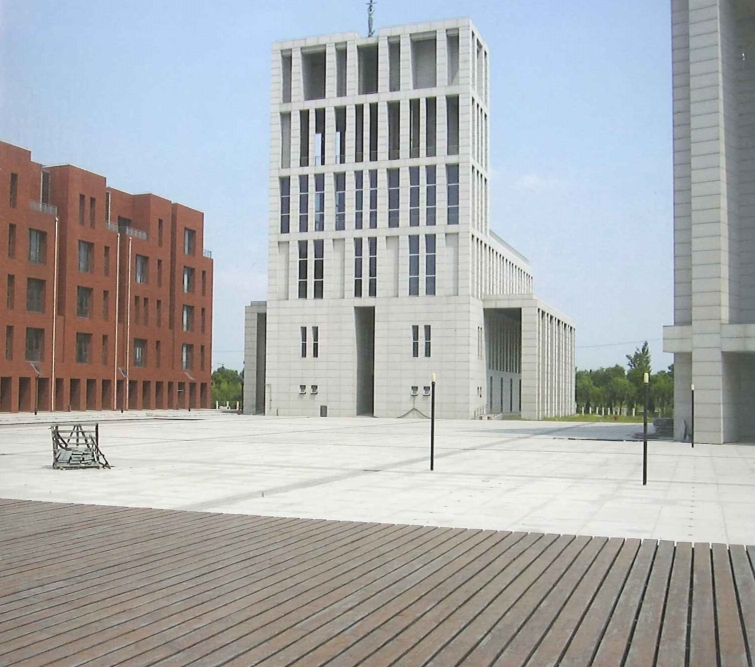
Central market square
with a church waiting for
users
source: Den Hartog, Harry:
Shanghai New Towns -
Searching for community
and identity in a
sprawling metropolis. 010
Publishers, Rotterdam
2010, 416 p. ISBN
978-90-6450-735-9
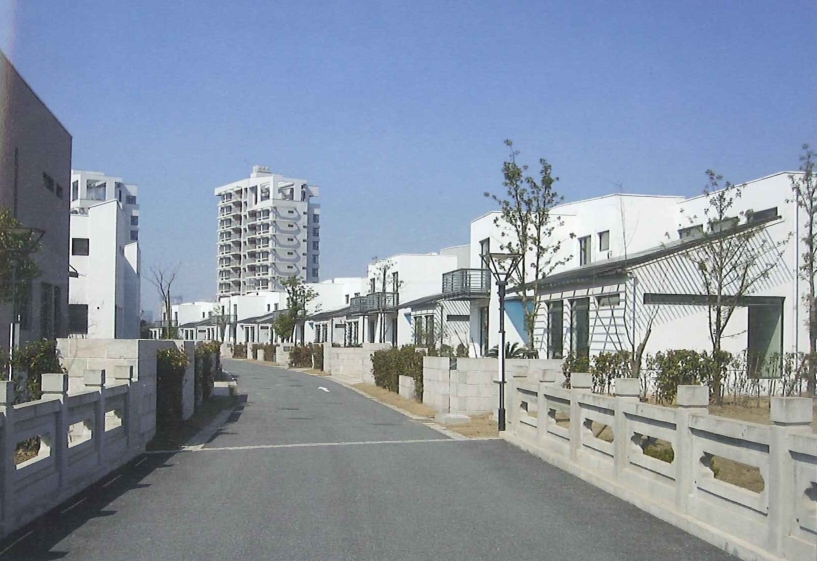
Village mostly used for
speculation or weekend
retreat
source: Den Hartog, Harry:
Shanghai New Towns -
Searching for community
and identity in a
sprawling metropolis. 010
Publishers, Rotterdam
2010, 416 p. ISBN
978-90-6450-735-9
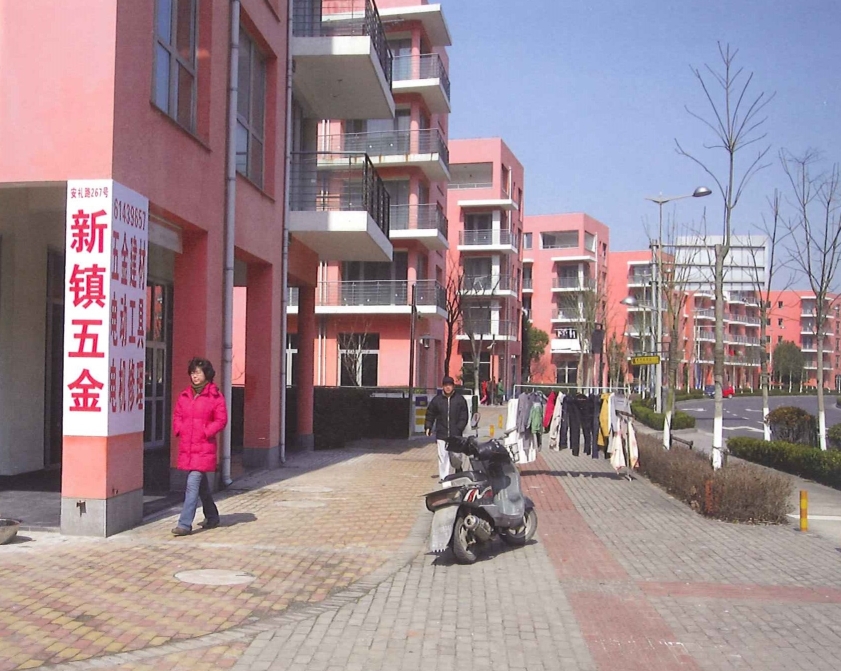
The street as extension
for or commercial
activities?
source: Den Hartog, Harry:
Shanghai New Towns -
Searching for community
and identity in a
sprawling metropolis. 010
Publishers, Rotterdam
2010, 416 p. ISBN
978-90-6450-735-9
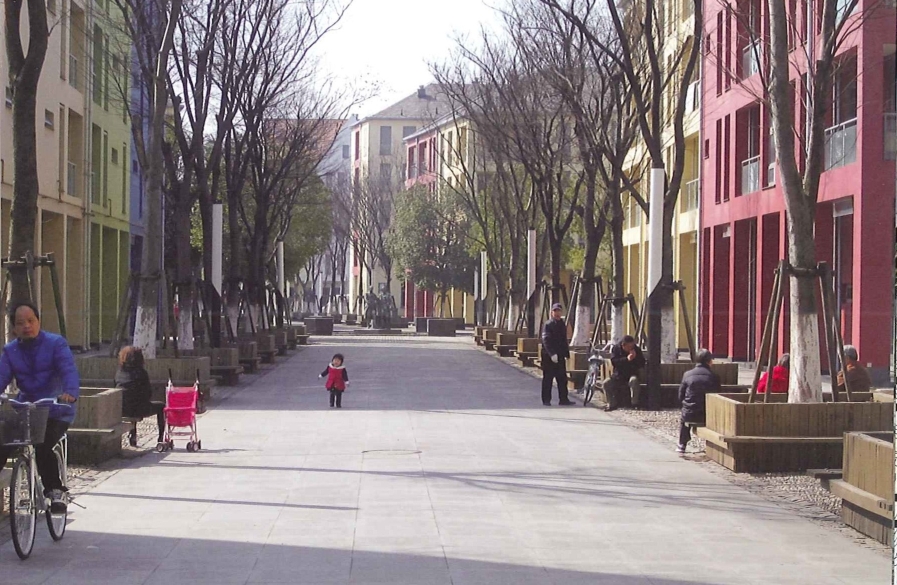
Some 'first' signs of
community
source: Den Hartog, Harry:
Shanghai New Towns -
Searching for community
and identity in a
sprawling metropolis. 010
Publishers, Rotterdam
2010, 416 p. ISBN
978-90-6450-735-9
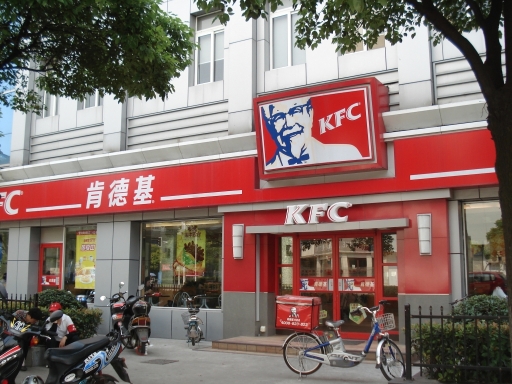
one of the famous
fast-foods
source: http://www.antinglife.net
/gallery/gallery.htm
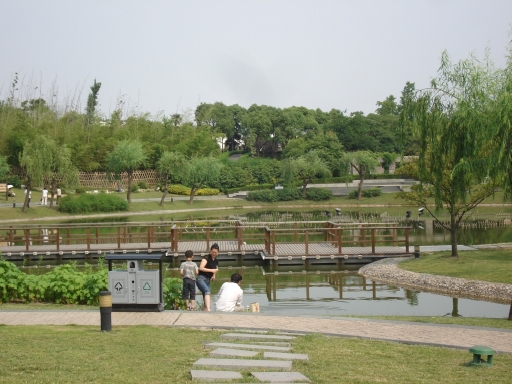
park
source: http://www.antinglife.net
/gallery/gallery.htm
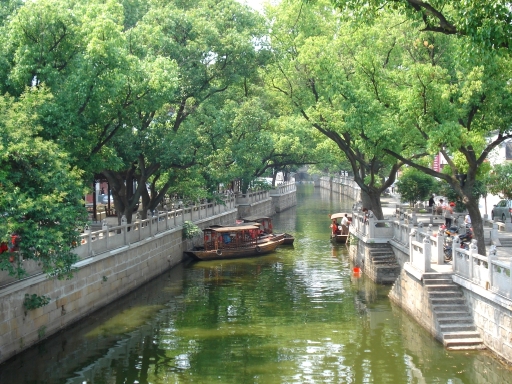
canal on the old town's
side
source: http://www.antinglife.net
/gallery/gallery.htm
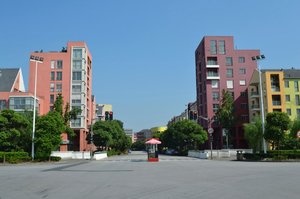
blocks of flats
source: http://io9.com/5850214/we
lcome-to-the-deserted-ger
man-city-outside-of-shang
hai
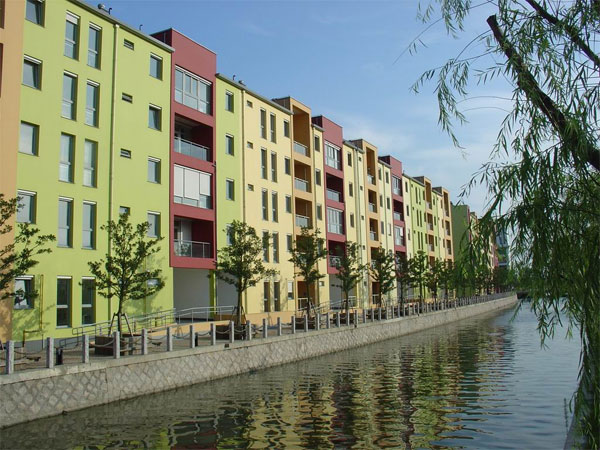
blocks of flats
source: http://english.jiading.go
v.cn/lifeDetail.asp?id=64
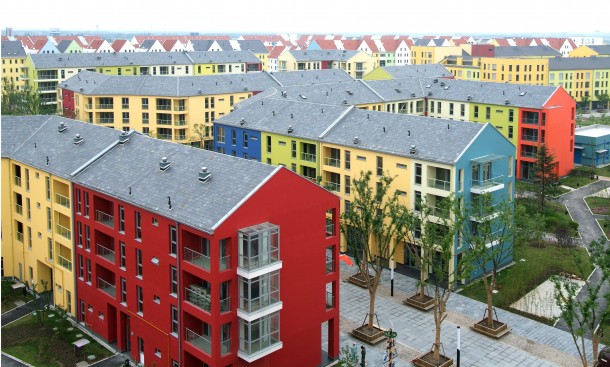
blocks of flats
source: http://www.as-p.de/projec
ts/urban-planning/9199-an
ting-new-town.html
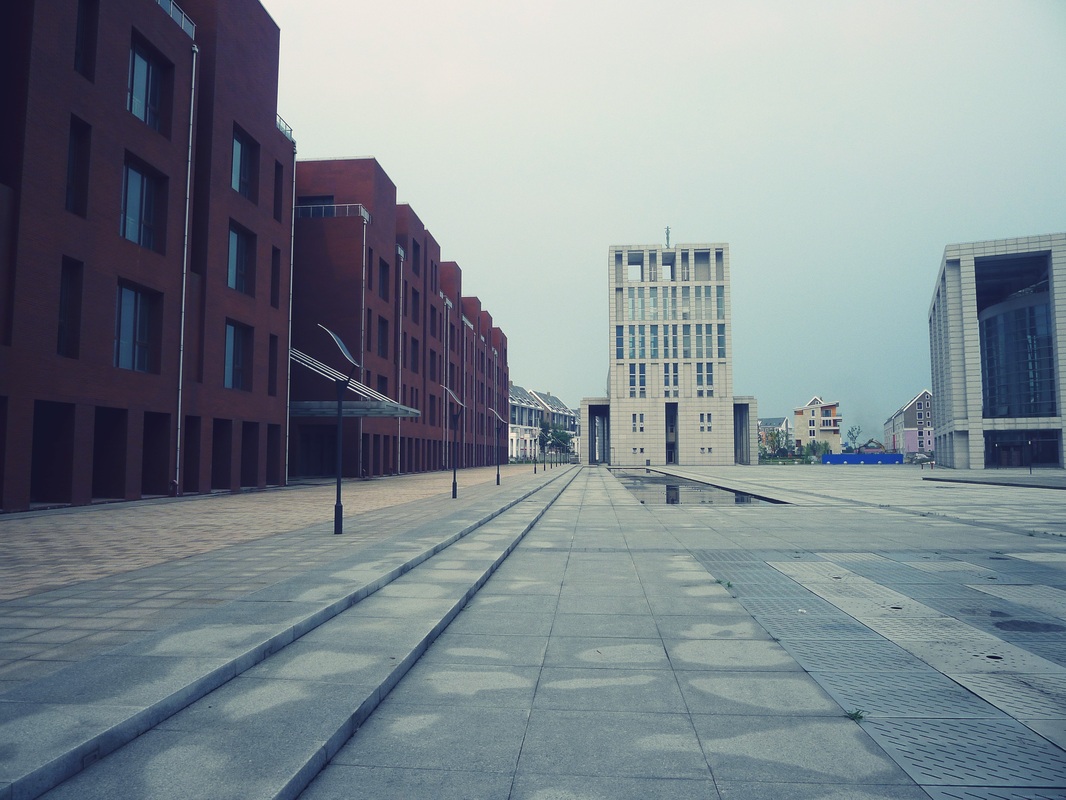
empty new town wih a view
of a church
source: http://www.studiochronoto
pe.com/2/post/2012/08/emp
ty-new-town.html
|

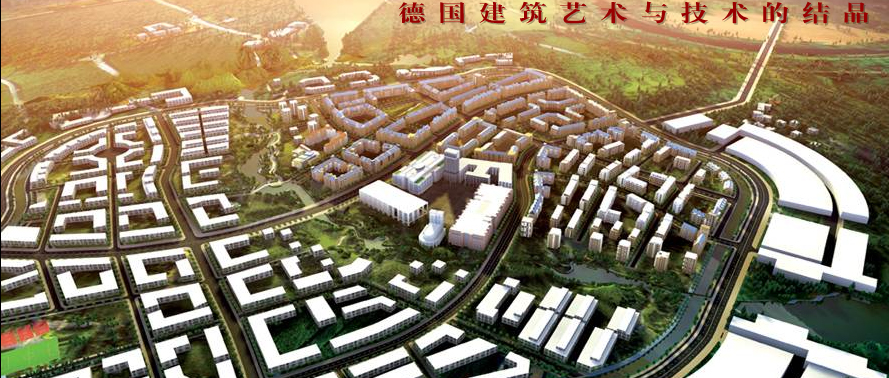
Anting Town is a town in the Jiading District, which is home to the Shanghai International Automobile City and Anting New Town. Shanghai International Automobile City contains a housing development, automobile area for manufacture, trade, exhibition, education, management, entertainment, independent research and development institutions, and Formula 1 circuit. It is Asia’s site for automobile manufacturing and trading. Contrary to that, Anting New Town provides accommodation for foreign managers and middle-class people.
Anting Town was one of the three main focus areas for urban growth. In 2001 Anting
Town became a part of the ‘One City, Nine Towns’ strategy.
A merger of three towns of the district (Anting Town, Jiading City, and Nanxiang) led to the establishment of Jiading New City planned to house more than 500,000 inhabitants and become the economic centre and seat of the district government.
The Shanghai Urban Planning and Administration Bureau of the district invited international leaders for the detailed urban design of Anting New Town and a master plan for Shanghai International Automobile City. The German firm Albert Speer & Partner (AS&P) won the international competition, which already had an opportunity to participate in similar projects in Shanghai. The company developed both plans within half a year. After three months, construction started on the project.
According to the plan, based on the Bauhaus style (marked by the absence of ornament and ostentatious facades and by harmony between function and the artistic and technical means employed), Anting New Town’s circular shape expresses urbanity, density and community, with perimeter blocks and a limited building height introduced in combination with a central market square and semi-public neighbourhood squares. As for the main road, they were designed in a pedestrian friendly way, with possibilities for underground parking. The main objective was to create a sustainable town with an above-average quality of building construction and high levels of energy efficiency – to reduce energy consumption to half that of current Chinese standards and thus to reduce energy costs.
Realisation
The project should represent a prototype for sustainable urban development. This includes the integration of innovative ideas to reduce costs and energy, and sustainable living practices, such as cogeneration plant, energy production based on biomass like sludge and organic waste, and so on. But at the end, none of the innovative solutions were implemented and the project did not meet its expectations due to insufficient preparation, lack of management capacity (i.e. skills or unawareness of local regulations).
The project faced many difficulties – cracked walls of buildings as a consequence of poor-quality materials; low city density – only 2, 5 per cent from the total 8,000 families has settled down; lack of services; or lack of infrastructure leading to an isolation of the town. Nevertheless, the project has had some success. The main structure has been realised with pedestrian areas, a curved parkway, open spaces, green belts and a water system.
In late 2009, a new developer entered the project and created another international competition for a new master plan with parts of the original plan included. The competition was open to three teams - AS&P, a Chinese team, and an Australian team. The developer requested a mix of residential units to cater for what they called ‘average Shanghai clientele’. One of the reasons for this change was the opening of a new metro line.
The winner, accomplishing all requirements, was again AS&P with its new project inspired by the ideas of the Garden City. The intent of the new plan was to resolve the current problems, especially the orientation of buildings – the old plan oriented them to the east-west, while the new one takes into account the north-south orientation as it conforms to the standards.
Nowadays, almost all buildings are oriented in the north-south direction.
Some sources refer to the city as a ghost town, due to a low number of residents. According to officials, only one in five apartments are occupied in the town.
source: Den Hartog, Harry: Shanghai New Towns - Searching for community and identity in a sprawling metropolis. 010 Publishers, Rotterdam 2010, 416 p. ISBN 978-90-6450-735-9 |

